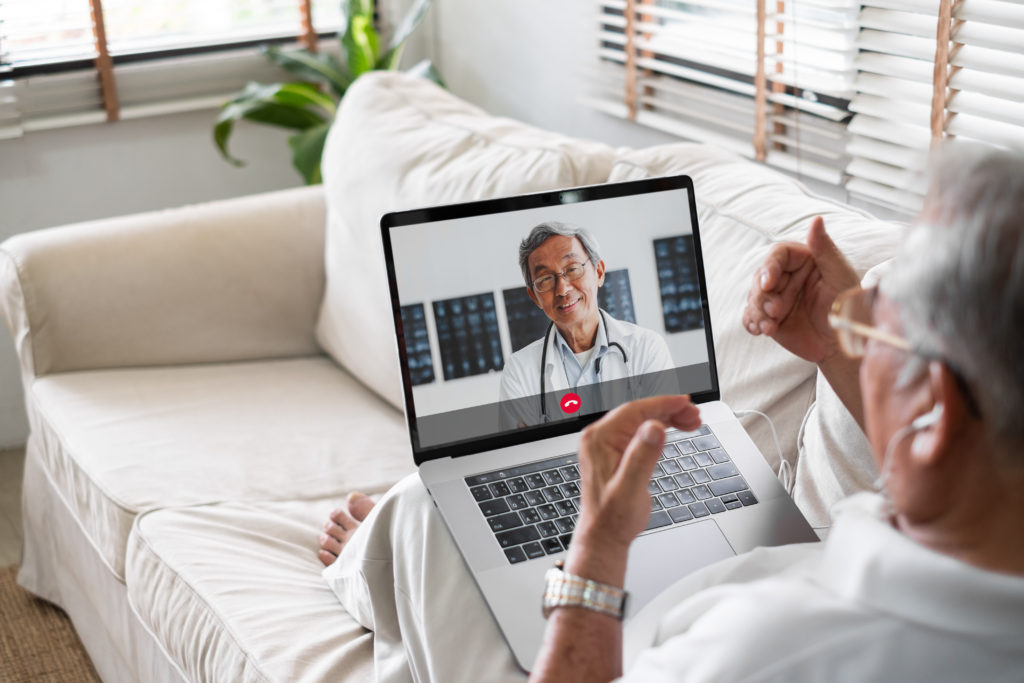This news roundup highlights various new studies about behavioral health needs and the industry’s effort to meet new demands, a new statistic showing the use of telehealth services by individuals who travel, a spike in telehealth care use for marginalized groups in the United States, and the concern for telehealth service apps.
New Report Calls for Telehealth Solutions to Address Behavioral Health Crisis
This study by Trilliant Health shows an increasing gap in behavioral health needs and the health care industry’s capacity to fulfill the growing demand. In Q2 2022, behavioral health visits surged 18% above pre-pandemic levels especially among those 18 and under. Virtual visits for first time patients seeking behavioral health support rose from 34.4% in 2019 to 63.8% in 2022. Health care organizations embracing telehealth care services continue to work to provide more virtual care options while making sure processes are simple and effective for new and reoccurring patients.
Read the full breakdown on this study at Health Leaders Media.
68% of Patients Who Needed Care While Traveling Used Telehealth, Study Shows
A new study from KeyCare, has shown 68% of patients traveling met with their regular doctor via telehealth. Participants cited speed and convenience as the top reasons for their decision to receive virtual care. KeyCare CEO Lyle Berkowitz, MD noted that these findings show a strong demand for telehealth services and the possibility to maintain continuity in care by allowing access to a patient’s main health system anywhere they go.
Learn more about these findings and Dr. Berkowitz’ insight from Becker’s Hospital Review.
Telehealth Use Among Older, Rural, Uninsured Adults Spikes
A new survey conducted by Rock Health from July 12, 2022 to August 22, 2022 has shown an 8% increase in telehealth care use from the previous year. The 2022 survey polled 8,014 U.S. adults and found that 80% of respondents have accessed telehealth care at some point, a rise from the 72% findings in 2021. Telehealth continues to be a desired alternative to traditional care across the country, but specifically continues to see popularity in traditionally underserved communities.
Of those respondents that use telehealth, the greatest year over year increases were observed by those 55 and older by 12%, from rural areas by 73%, and without insurance by 50% respectively. Other communities including women and Hispanic respondents saw a rise in reported use as well.
Read the full analysis of this report at mHealth Intelligence
Therapy Apps: Need-To-Know Issues for Clinicians
While providers and health care systems across the nation have made strides in increasing accessibility to care, there still remains a gap between the demand for and availability of behavioral health services. Mental health therapy apps have been presented as a solution to help bridge this gap, but only if clinicians know how to adequately implement them into their treatment. A major concern of this approach is the lack of detailed and evidence-based information about mental health apps. A publication in the Journal of Technology in Behavioral Science reviewed 347 health care apps during a four month period with nine different categories of criteria. The findings showed an average of 433 days between application updates. Other concerns include a lack of regulatory oversight and proper training and onboarding for providers and patients.
Learn more about these apps and industry concerns at Telehealth.org
New data continues to emerge on the impact of telehealth in the health care industry. Staying informed will prove to be vital as telehealth adapts and grows to tackle new challenges and needs throughout the country.
To stay up to date with the latest from VTN, be sure to sign up for monthly eblasts.

